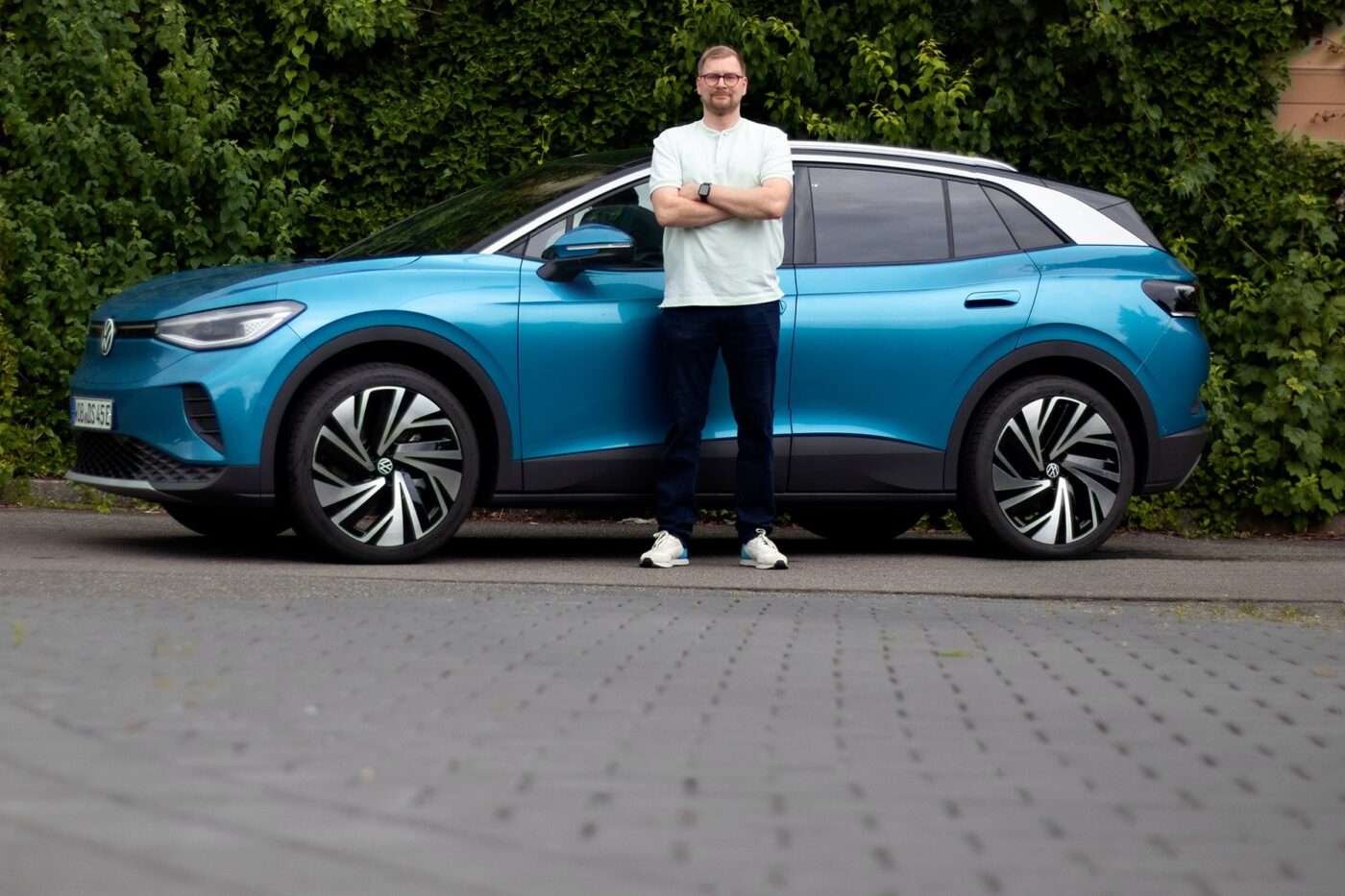
New VW ID.4 test begs the question – Why not launch like this?
There is chaos at VW: Changes to the platform strategy are currently almost the order of the day. Ultimately, this also has an impact on future models. Keyword Trinity. But things haven’t always run smoothly in the past either. The ID.3, for example, was heavily criticised right from the start. VW has made improvements and brought the model to a level that would have been expected at market launch. The ID.4, which followed the ID.3 in 2021, was much less criticised. And yet there was potential for the second model based on the Modular Electric Drive Toolkit (MEB) right from the start. And so the Wolfsburg-based company announced a facelift for the electric SUV last summer with significant changes, as our test with the ID.4 Pro 4MOTION all-wheel drive variant shows.
Only half a facelift
The ID.4 will not receive a ‘proper’ facelift until 2026, when it will presumably be converted to the advanced MEB+. The exterior of the model will then certainly also be given a facelift. Conversely, this means that nothing has been changed to the exterior in the current facelift. The vehicle still looks very powerful thanks to its bulky front end and wide rear end. The major changes mainly concern the inner values – not only in the drive system, but also in the interior. Upon entering, the enlarged touch display on the dashboard, which now measures 12.9 inches, is immediately noticeable. Previously it was ten inches (twelve inches optional). Finally, the touch sliders for the climate and volume control below the display are also illuminated.
Before I could set off on my first drive, I had to turn down the radio, as the delivery driver had obviously savoured the Harman Kardon sound system. Out of habit, I tried to change the volume on the right-hand touch controls on the steering wheel, unsuccessfully, as VW redesigned the multifunction steering wheel. For that reason, the arrangement of the control panels has changed. The volume control is now located at the bottom left of the steering wheel. Very good. At least I don’t unintentionally trigger something in the infotainment system when I adjust the volume, thanks to the new controls on the steering wheel clamps. The new multifunction steering wheel is not yet perfect either: there were still operating errors in the test, as the touch control panels still work more poorly than well overall.
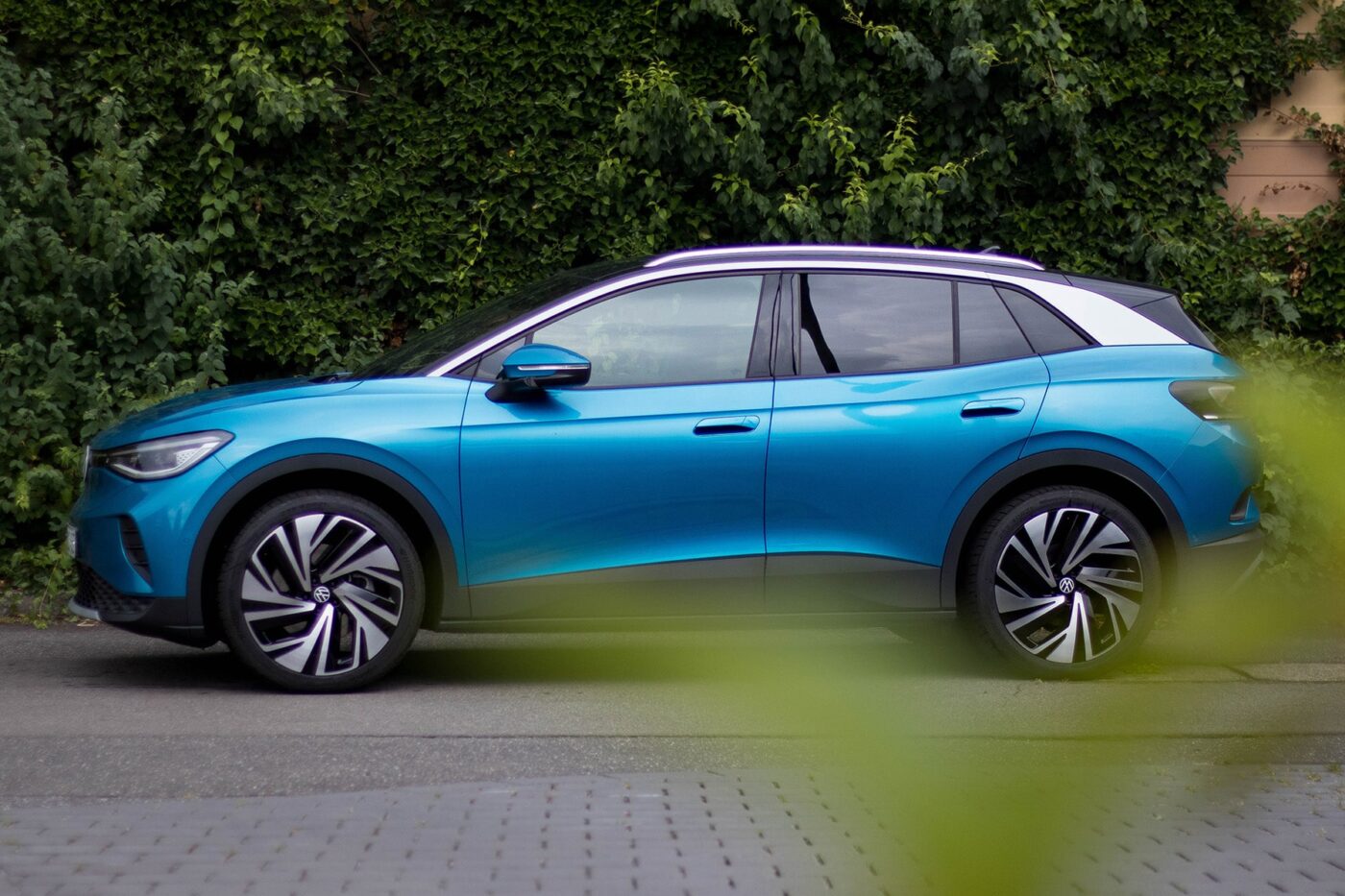
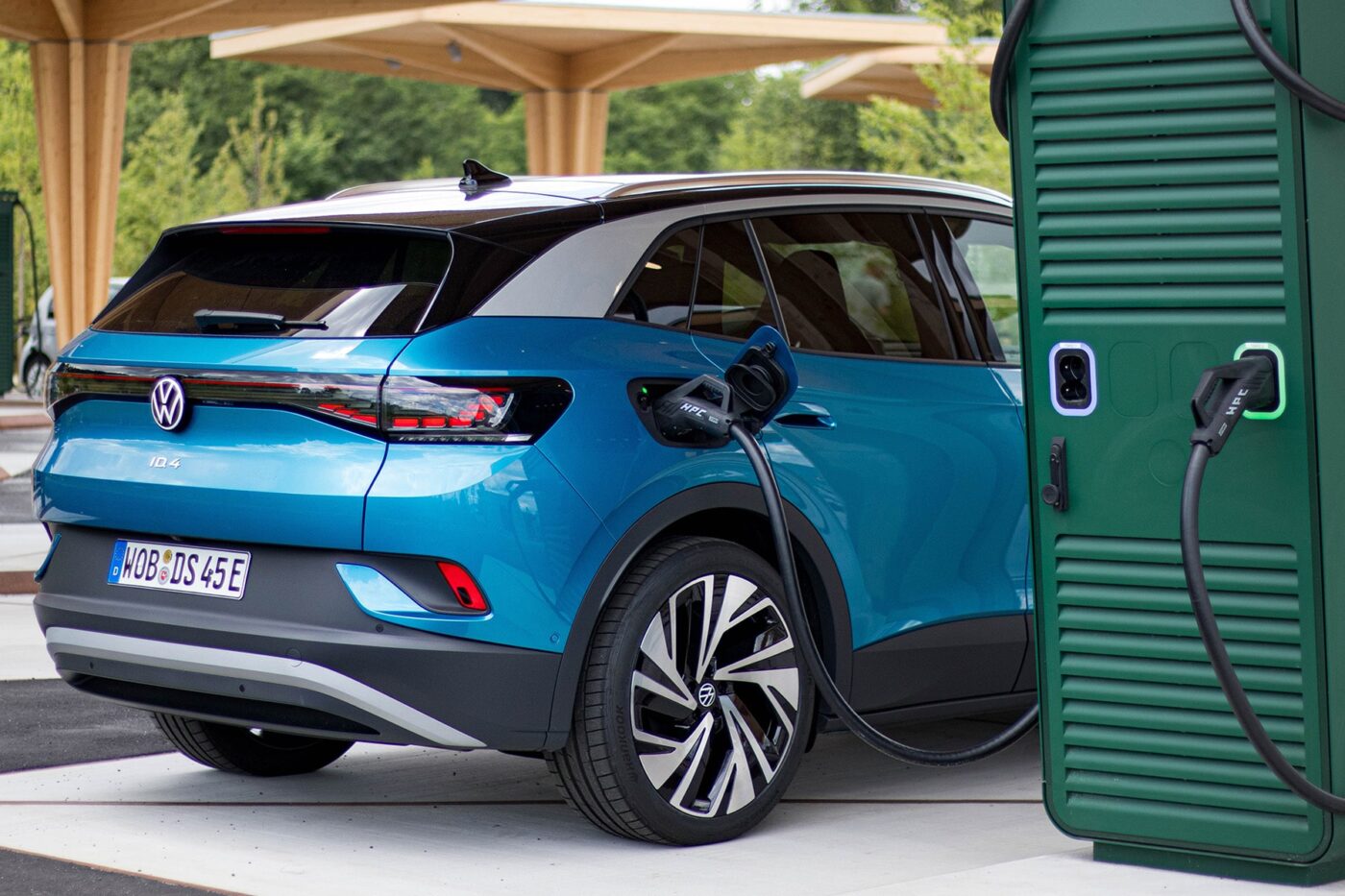
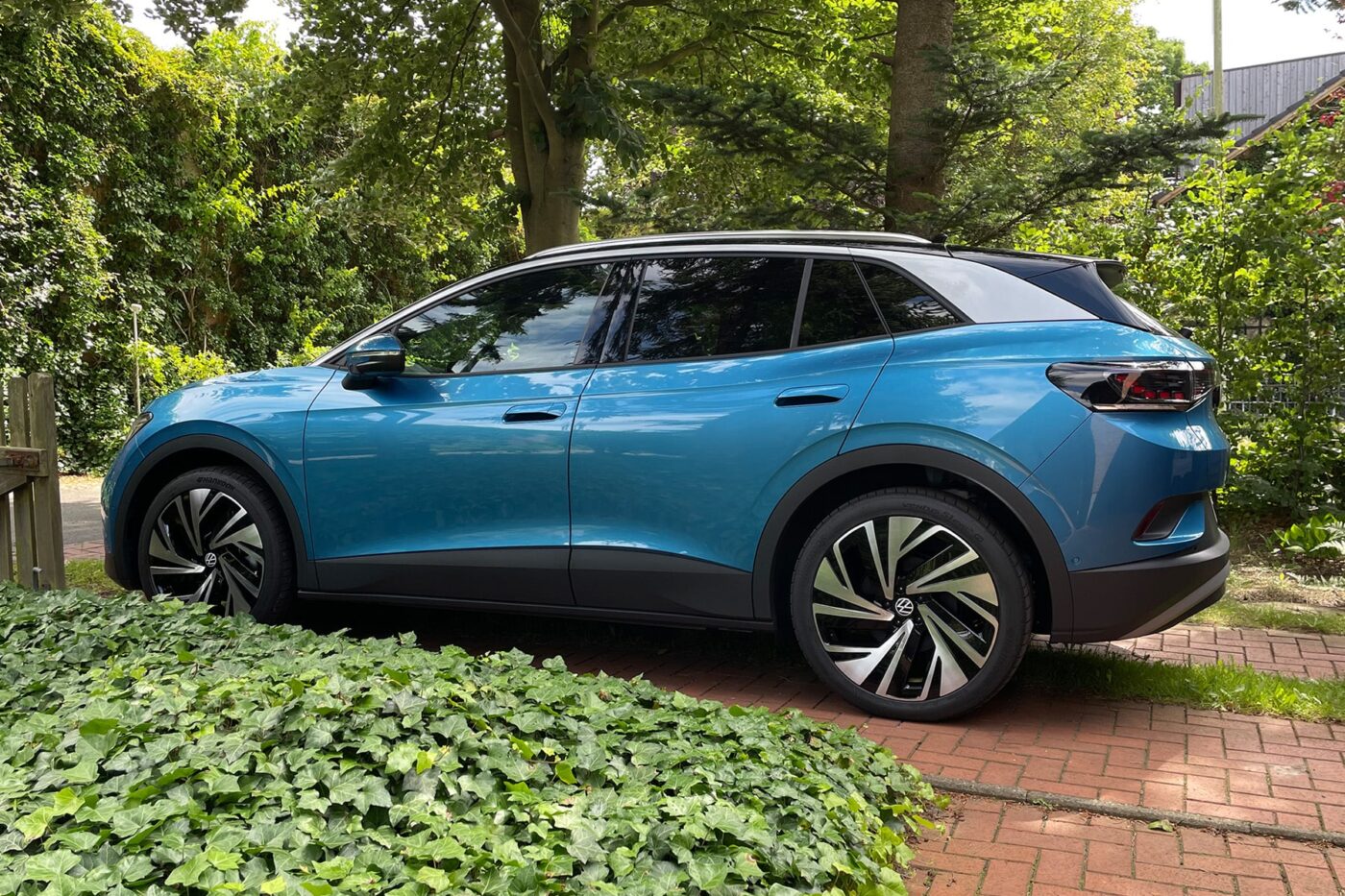
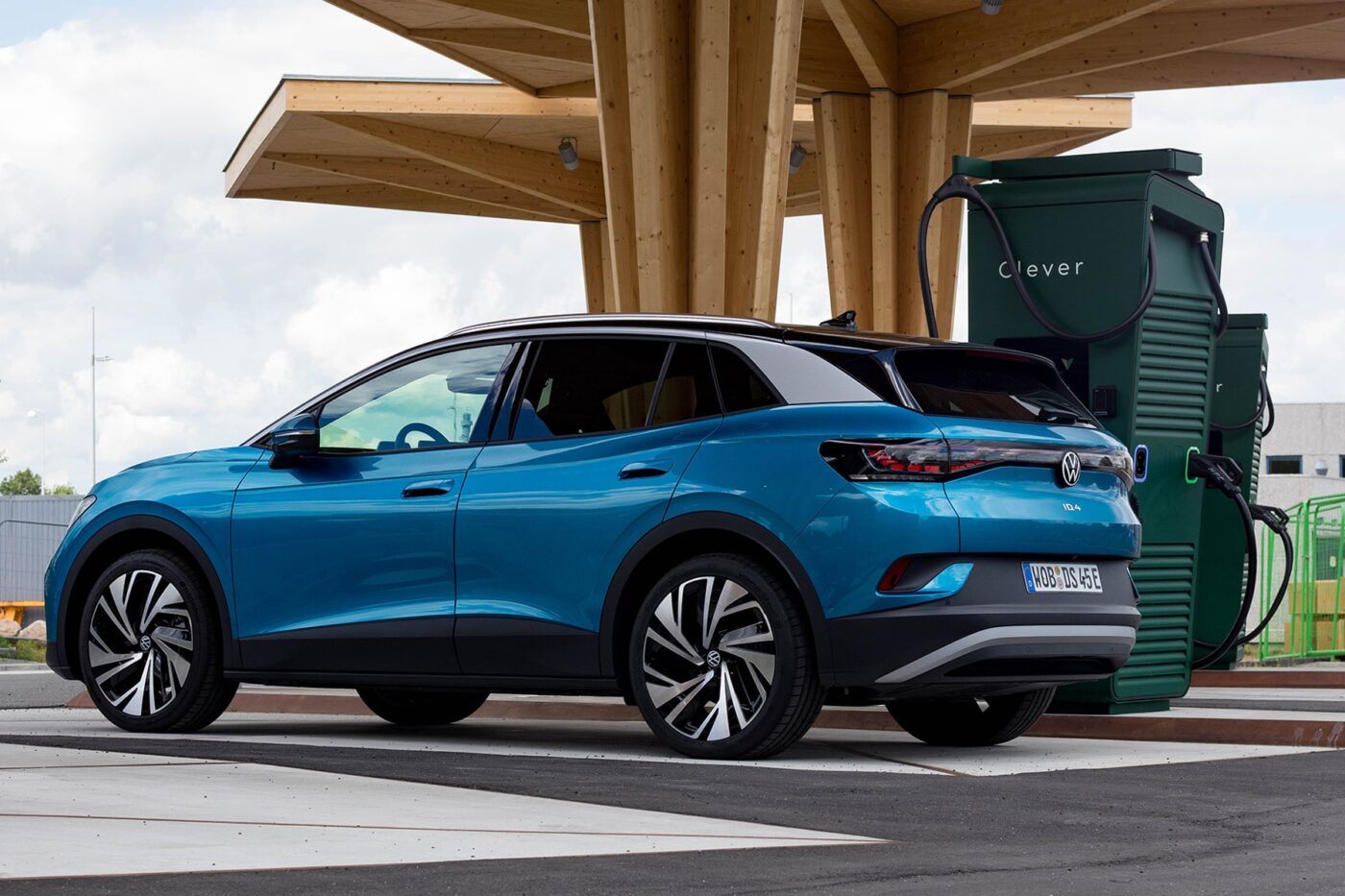
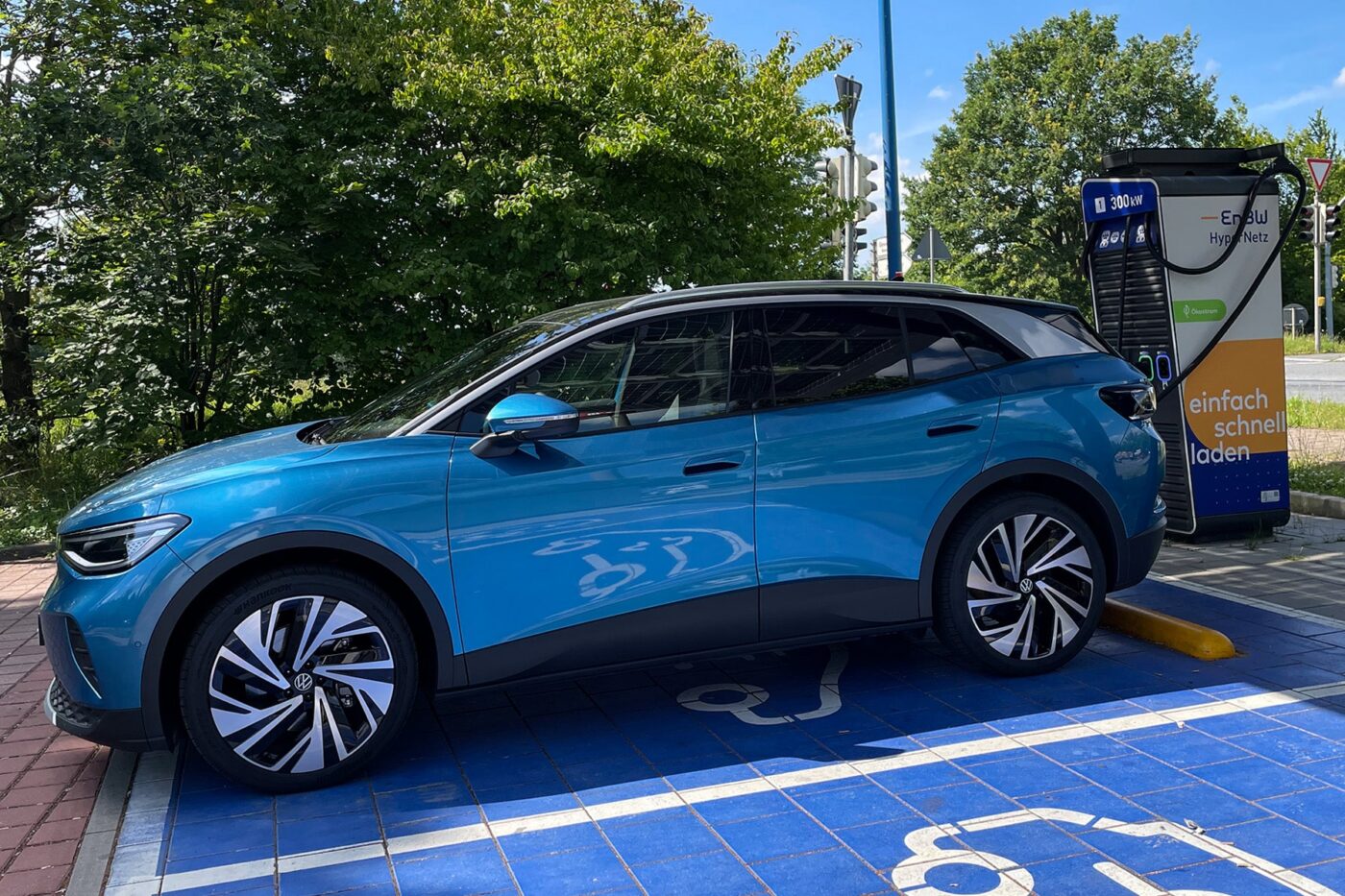
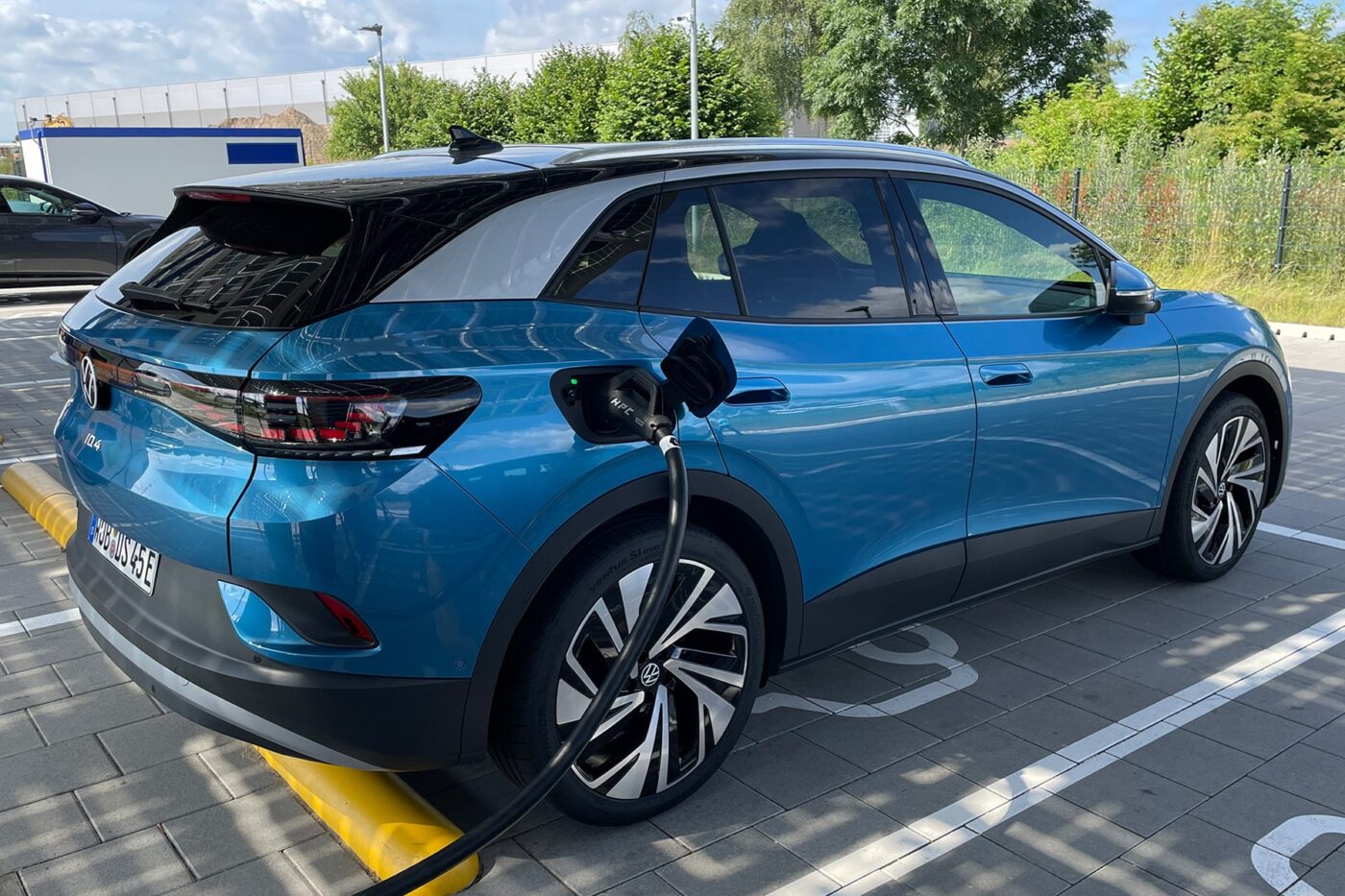
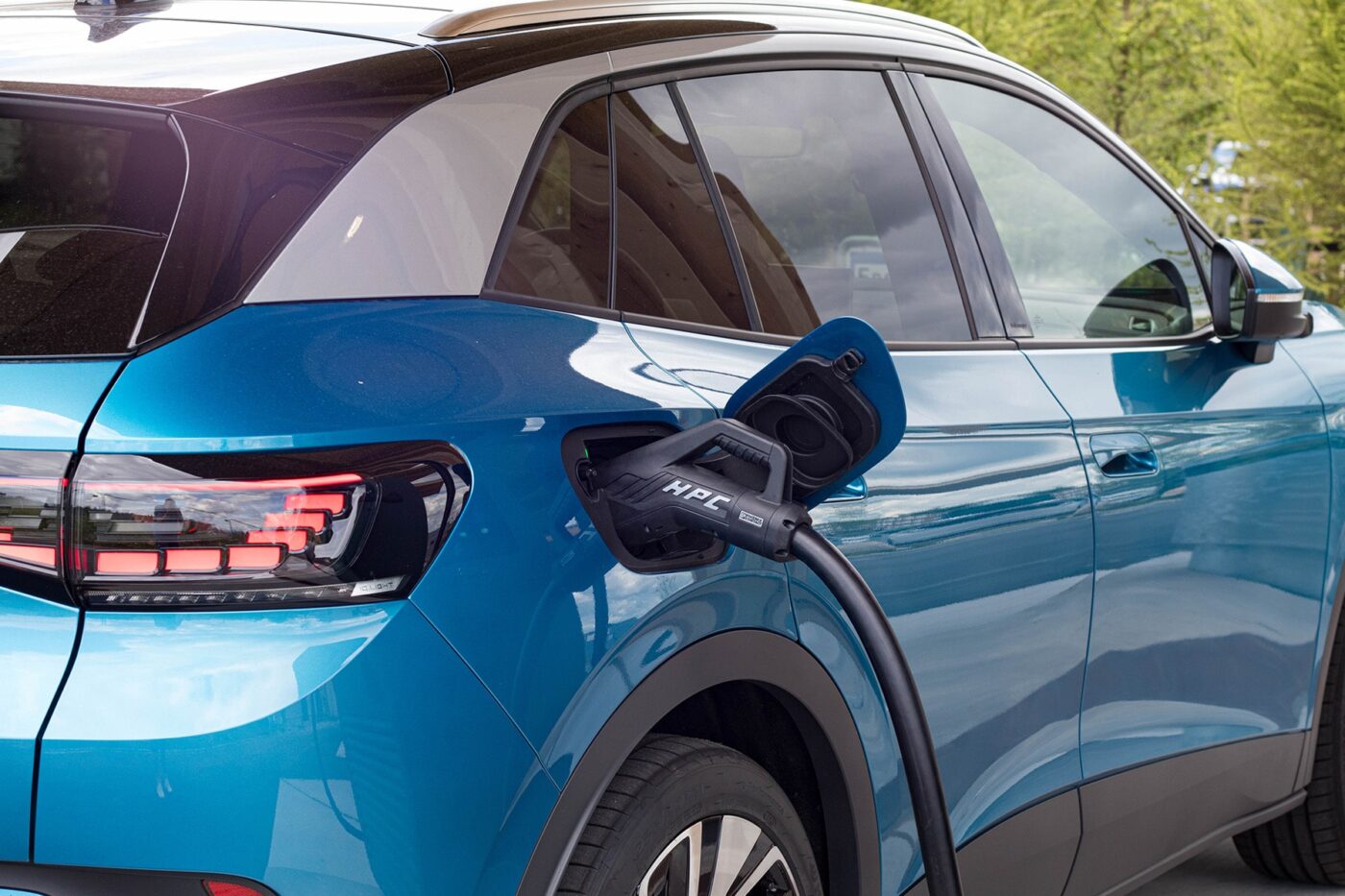
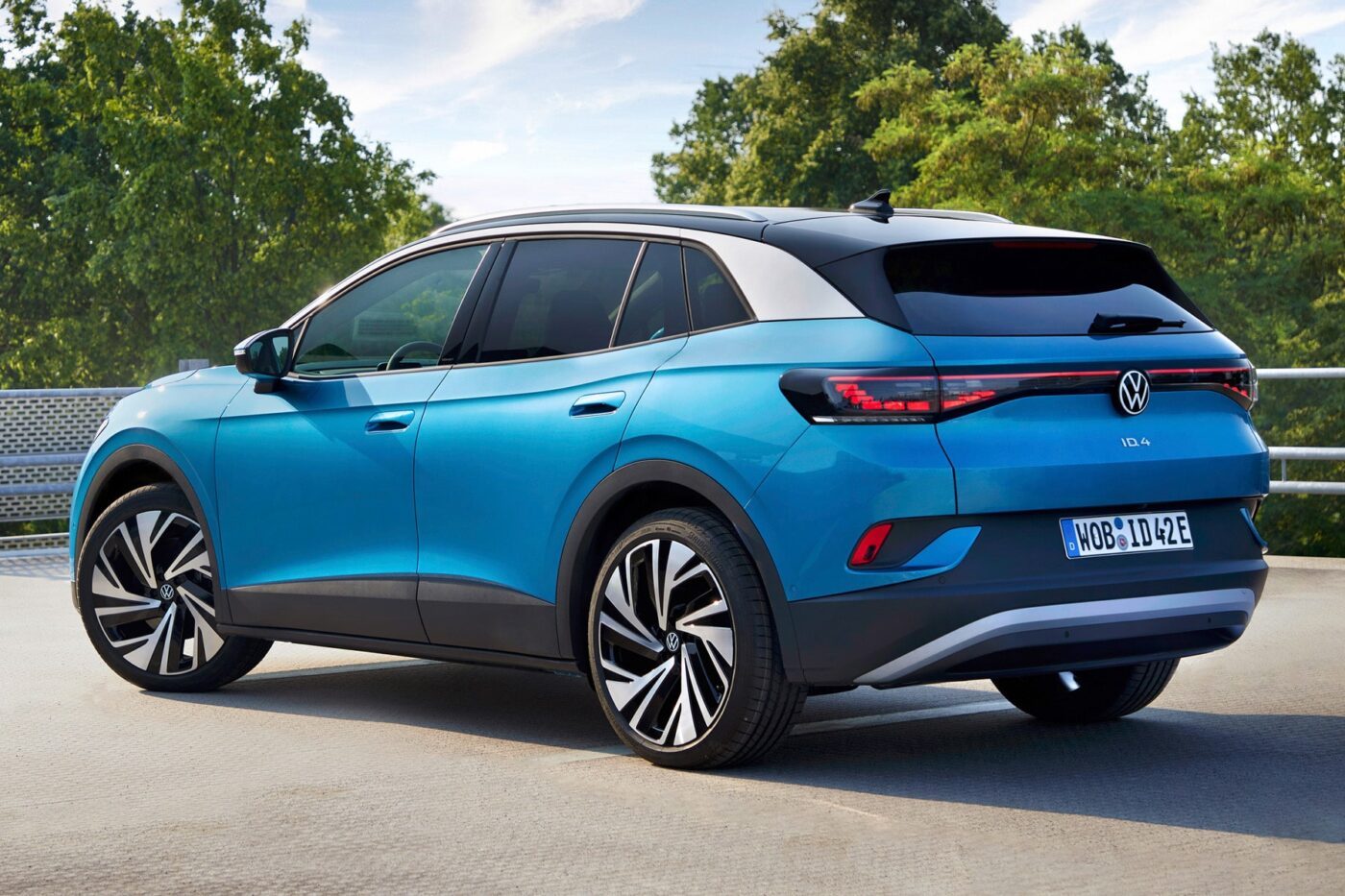
I probably won’t get used to what Volkswagen calls the ‘Digital Cockpit’, by which they mean the driver information display. I am mainly referring to the appearance. It looks out of place and cheap, which means that despite the otherwise convincing overall impression of quality, there are deductions for the workmanship. However, I noticed that something was missing from the ‘Digital Cockpit’; the gear selector lever was detached from the driver information display and designed separately – as in the ID.7 – as a steering column lever. In my opinion, this was the better ergonomic decision.
Increased efficiency despite higher performance
Much more important than changing control panels or the position of a gear selector is the technology ‘under the bonnet’ – in terms of the drive, consumption, charging performance and infotainment system. However, let’s first focus on the centrepiece of the electric SUV. Right from the start, the ID.4 was not an energy consumption monster, a label that other electric cars within the VW Group have had to bear. With a view to the competition – Tesla and BMW send their regards – there was still room for improvement. And so the Wolfsburg-based company has upped the ante and equipped the ID.4 SUV series with the new and more efficient electric motor from the ID.7, internally known as the APP550, on the rear axle. The familiar design with the pulse inverter integrated into the motor housing, rotor, stator, cooling jacket, gearbox and gearbox housing remains the same. However, all components have been further developed. In order not to make the driving report endlessly long, you will find the details of the new motor prepared by my colleague Chris Randall here.
So let’s focus on the new performance data, because there have also been noticeable changes here. In the rear-wheel drive ID.4 Pro and ID.5 Pro models – yes, the ID.5 has also received all the updates mentioned here – the new electric motor now has an output of 210 kW, which is 60 kW more than its predecessor. Torque has increased from 310 to 545 Nm. The new APP550 is also used in the ID.4 Pro 4MOTION all-wheel drive variant tested. There is also an electric motor with an output of 80 kW on the front axle. Despite this, the system output is still 210 kW, as with the Pro.
Although the increase in system output from 195 kW to the aforementioned 210 kW in the all-wheel drive model may seem small, the rear motor alone has become 60 kW more powerful. This means that the motor on the rear axle has by no means been throttled back; it provides the propulsion alone when driving at a moderate speed. Only when more power is required does the front motor kick in – and increases the system torque to 679 Nm (before the facelift: 472 Nm). In other words, the additional front-wheel drive always comes into play when the situation demands it, for example when cornering at speed or on slippery surfaces. The top speed is still 180 kph, which was already the case with this variant. Only with the Pro has the top speed increased from 160 kph to 180 kph.
Incidentally, VW has further refined the DCC adaptive chassis control and the driving dynamics manager has also been optimised. However, as my journeys with the predecessor were some time ago, it is honestly difficult for me to make a direct comparison. The following applies to the successor: whether on bumpy tracks, winding country roads or fast journeys on the motorway, the suspension set-up in the ID.4 is impressive. Relaxed travelling is therefore possible with the E-SUV and the excellent noise insulation, even at high speeds, adds to this. However, the ID.4 can also be driven in a sportier manner and it stays on track with ease.
Greater efficiency = more range
Despite all the small updates to the drive system, the battery has remained the same with a net energy content of 77 kWh. However, as the new drive is slightly more efficient, the range increases on paper: VW states a WLTP range of up to 535 kilometres for the ID.4 Pro 4MOTION, compared to 517 kilometres previously. The 3.5 per cent increase in range is therefore manageable. On the road, the driving style will therefore have a much greater influence than the small increase in the standard range.
To be fair, I was mainly out and about in ideal conditions. Temperatures of around 20 degrees, plenty of sunshine and little wind. As a result, the consumption values according to the onboard computer ranged between 18.5 and 19.5 kWh/100 km when driving mainly on the motorway at 120 to 130 kph, resulting in ranges of between 420 and around 390 kilometres. However, I would say the motorway range is closer to 350 kilometres when the conditions are not quite so ideal. On city and country roads, the consumption values were significantly lower (between 15.5 and 17.5 kWh/100 km), which meant that ranges of around 450 kilometres were possible. As consumption values are very individual, I can of course only speak from my own experience here. In practice, however, I found that the new all-wheel-drive vehicle can be driven at the same level as the old ID.4 with rear-wheel drive. The 3.5 per cent increase may not sound like much, but it is still measurable and noticeable. If the driving style is right.
Significantly shorter charging time at the fast charger
The significantly increased DC charging capacity of the 77 kWh battery was also measurable and noticeable. At the market launch, the all-wheel drive version could only be charged with up to 135 kW at peak power. The charging time from ten to 80 per cent was around 35 minutes. According to the technical data sheet, the maximum possible charging power has now been increased to 175 kW – including for the revised Pro version. The same charging process should now be completed within 28 minutes due to the higher charging power. That is seven minutes faster than before.
The charging curve shows that VW even allowed up to 185 kW over a very long period of time. The plateau could be maintained up to a State of Charge (SoC) of 37 per cent before the power dropped significantly. Within eight minutes, the battery was charged from ten to 40 per cent, and it took 13 minutes to charge to 50 per cent. After 32 minutes, the SoC of 80 per cent was reached, which is four minutes longer than the information on the technical data sheet.
The three to four minutes longer should hardly matter in everyday use. It is also true that I had been travelling at high speeds on the motorway for a long time before the recording, the vehicle was in the sun during the charging process and the temperatures of over 30 degrees were obviously challenging for the ID.4. Nevertheless, I would have expected a charging time of 30 minutes under these conditions. And then there are the South Koreans, among others, who can boast a significantly better charging time, albeit on an 800-volt basis, with less than 20 minutes in the ideal case.
In the charging menu, the ID.4 now displays the maximum possible charging power at the current time. It also shows how long the system needs to precondition (heat and cool) the battery in order to provide the maximum possible charging power with the respective state of charge. As a rule, the system does this automatically when route planning is activated. However, the driver can also start preconditioning manually if required. In practice, both options worked really well. A plus point at this point. The automatic charging stop planning along my routes was also reliable – albeit not perfect. It was often human needs that necessitated deviations from the stops planned by VW.
Upgrade to the infotainment system
Speaking of the infotainment system, I already mentioned the significantly larger touch display. What I haven’t mentioned so far is that the new system, which is supplied with software version 4.0, works much faster. Overall, the operation of the vehicle is much smoother than before. VW has also worked on the menu structure. The bar at the top of the screen has a menu button that can be used to access the apps more quickly. Next to it is a button for the new ‘Car Control Centre’, which provides direct access to the most important vehicle functions – which can also be individually configured by the driver. The main menu and the ‘Car Control Centre’ are visible at all times and can therefore be called up immediately without having to close the active app. This proved to be particularly advantageous when it came to deactivating the speeding warning for the journey in question. With the new arrangement, this can be switched off in just three steps. Of course, it goes without saying that you should keep to the speed limit. However, if speed limits are occasionally recognised incorrectly or not at all, which hardly any manufacturer does perfectly, the message can quickly become annoying. There is also a second touch bar at the bottom of the display, which can be used to permanently access the climate and ventilation functions.
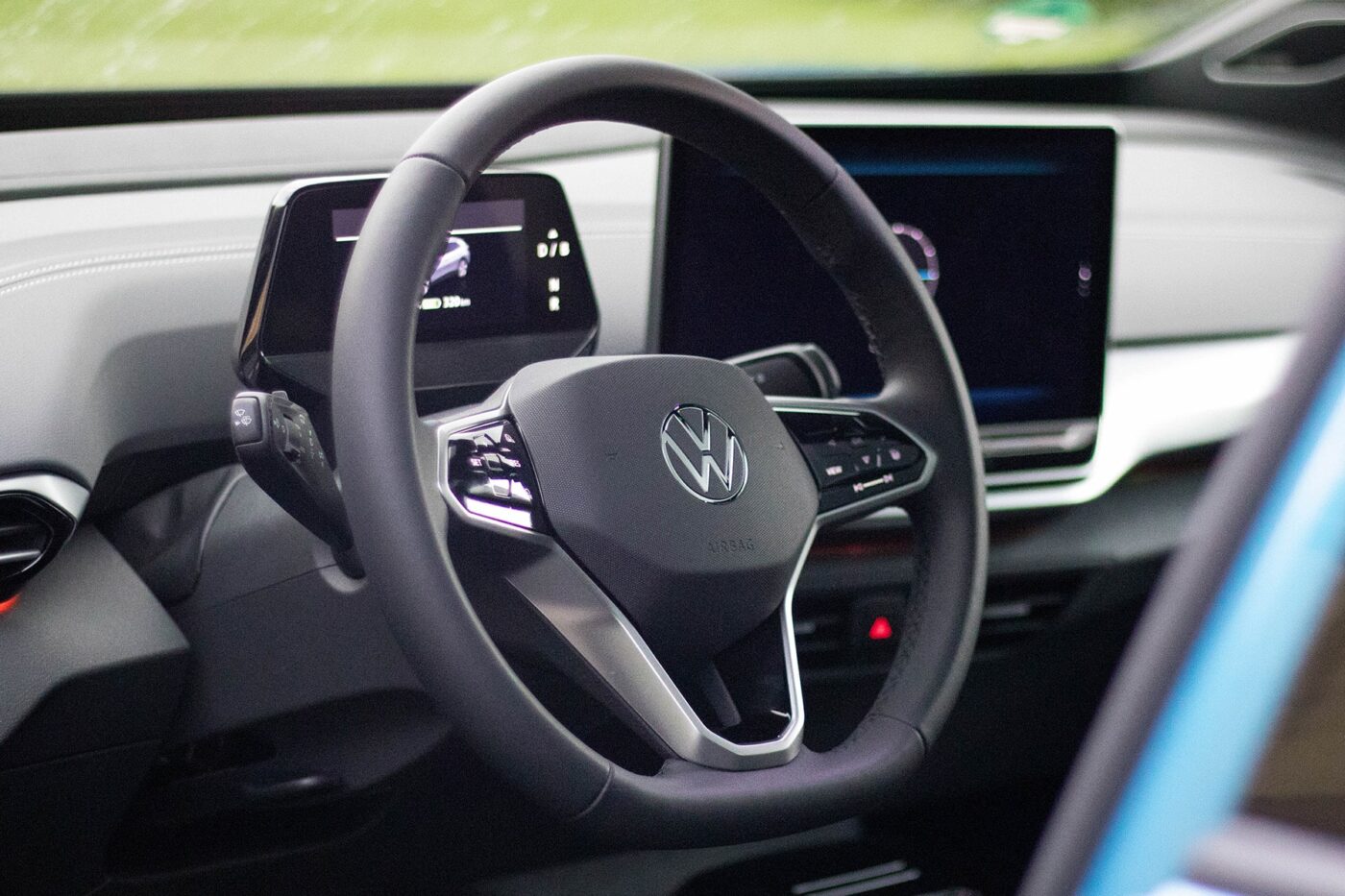
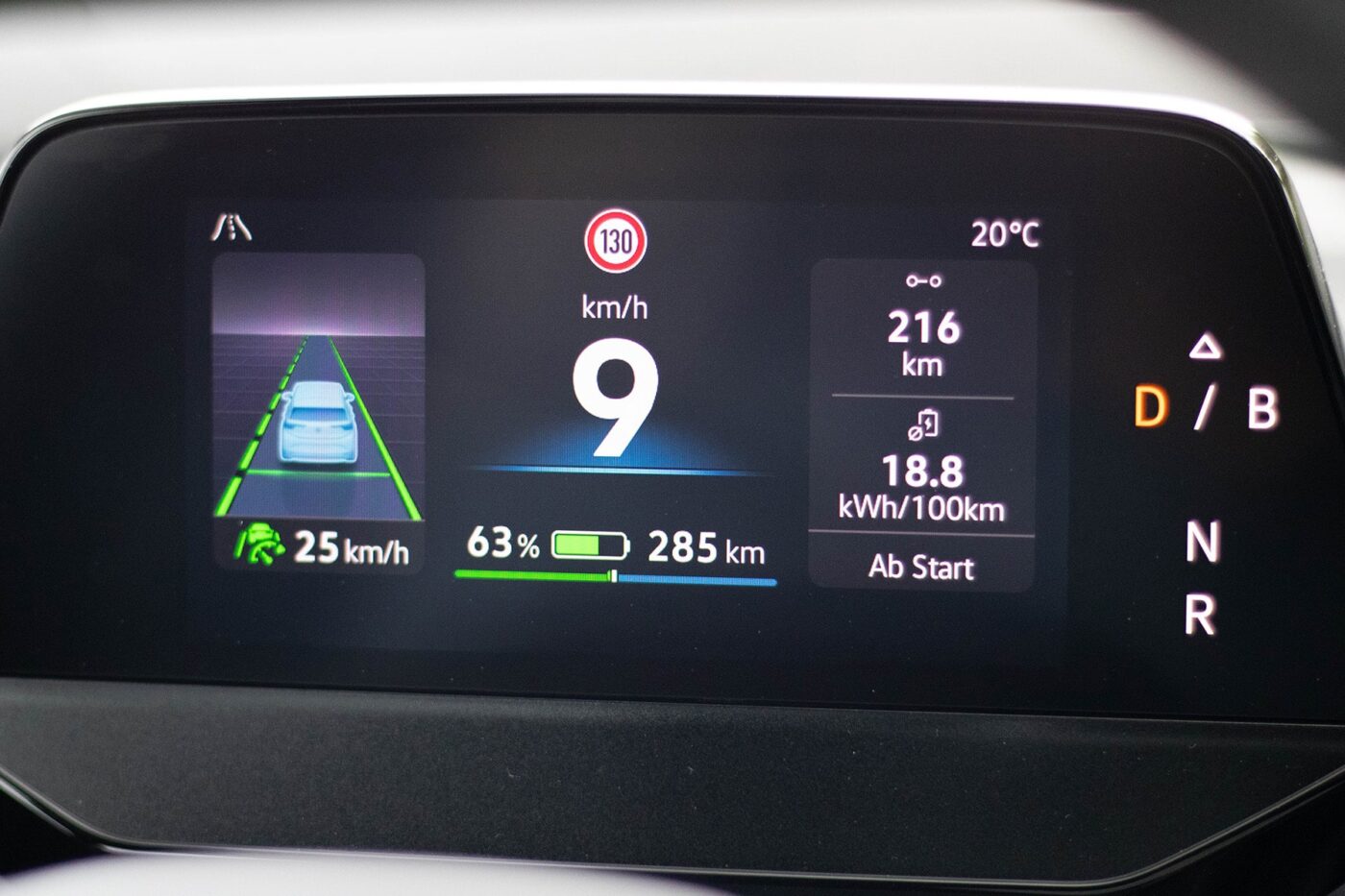
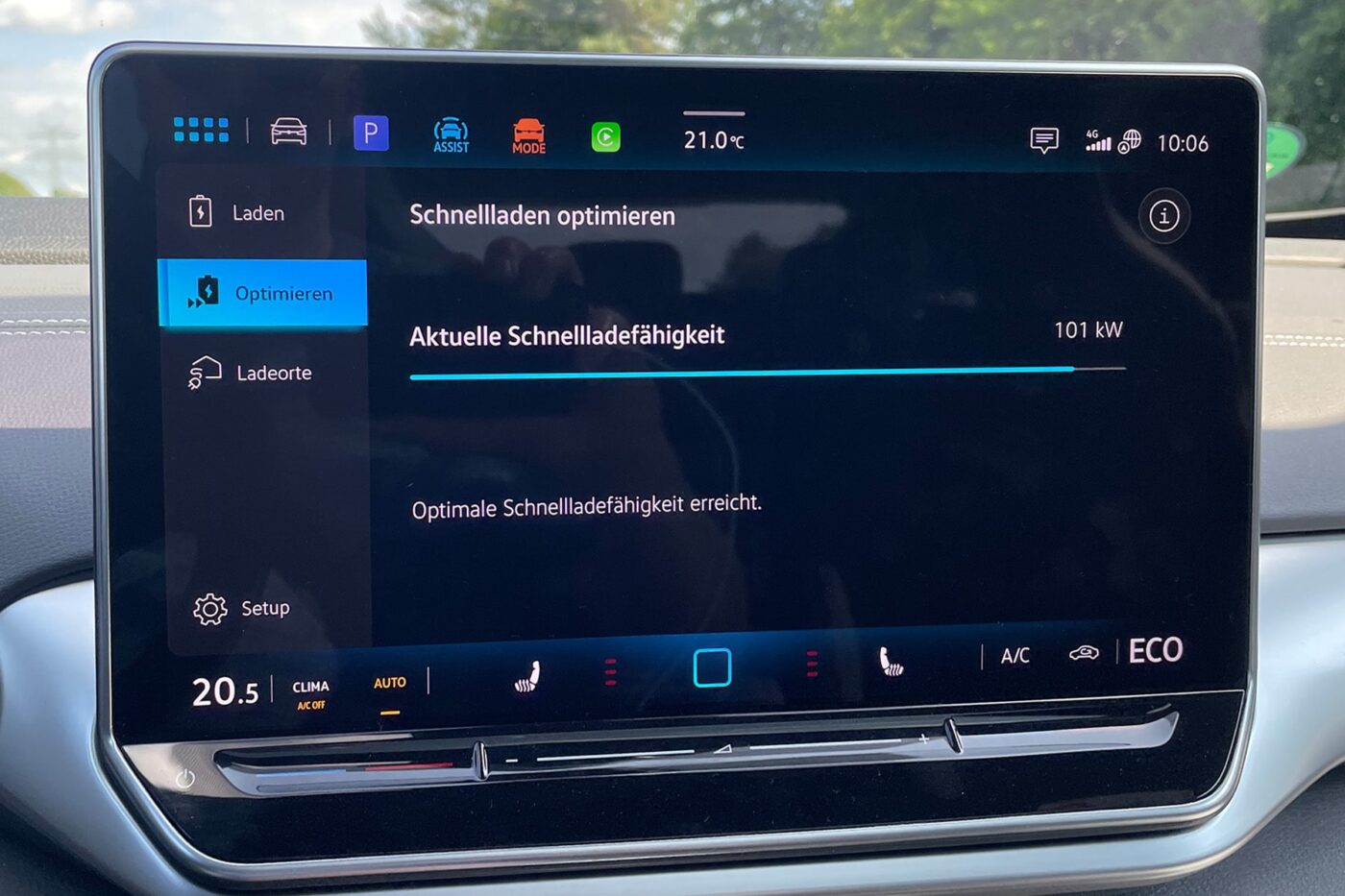
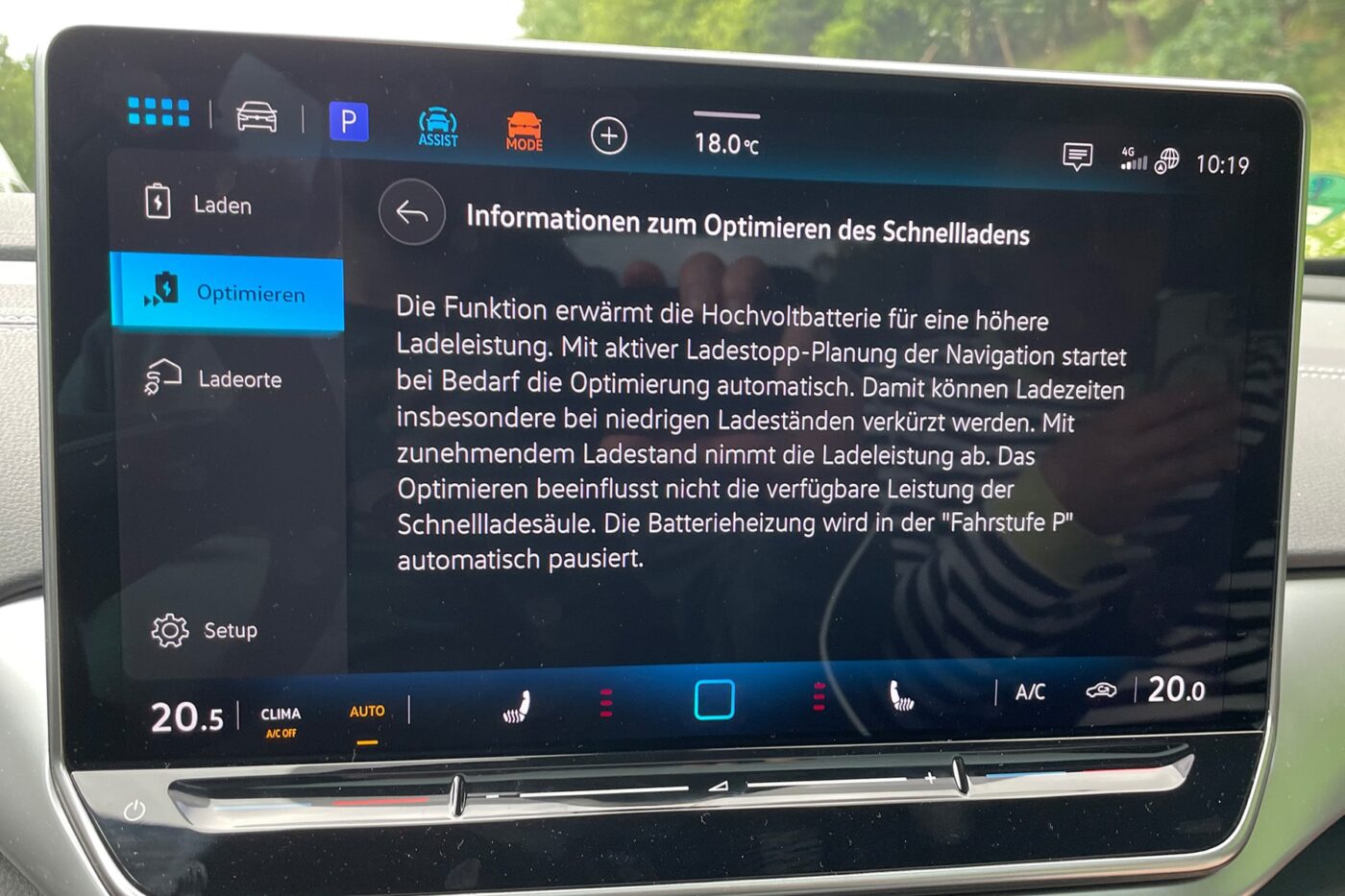
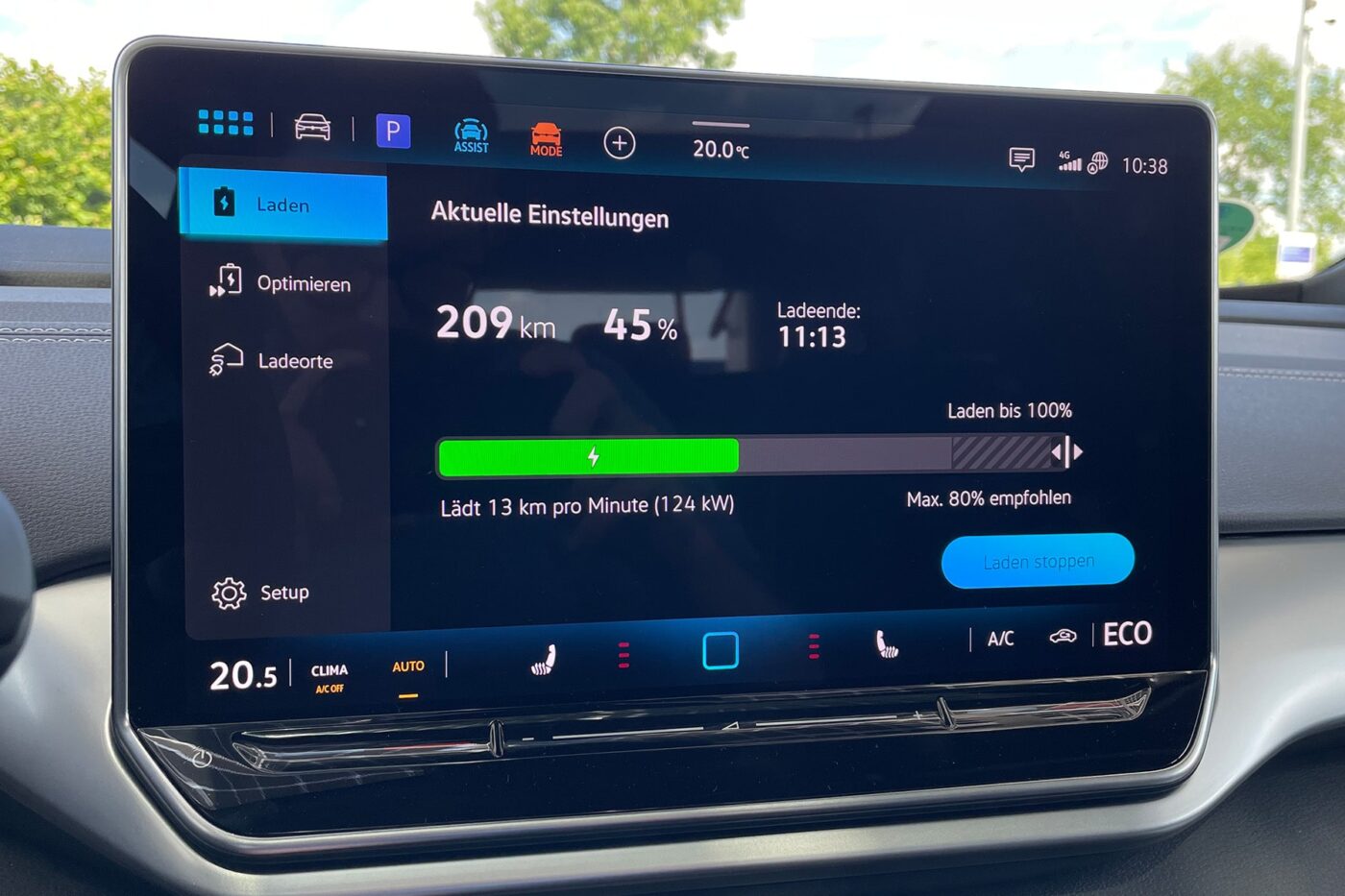
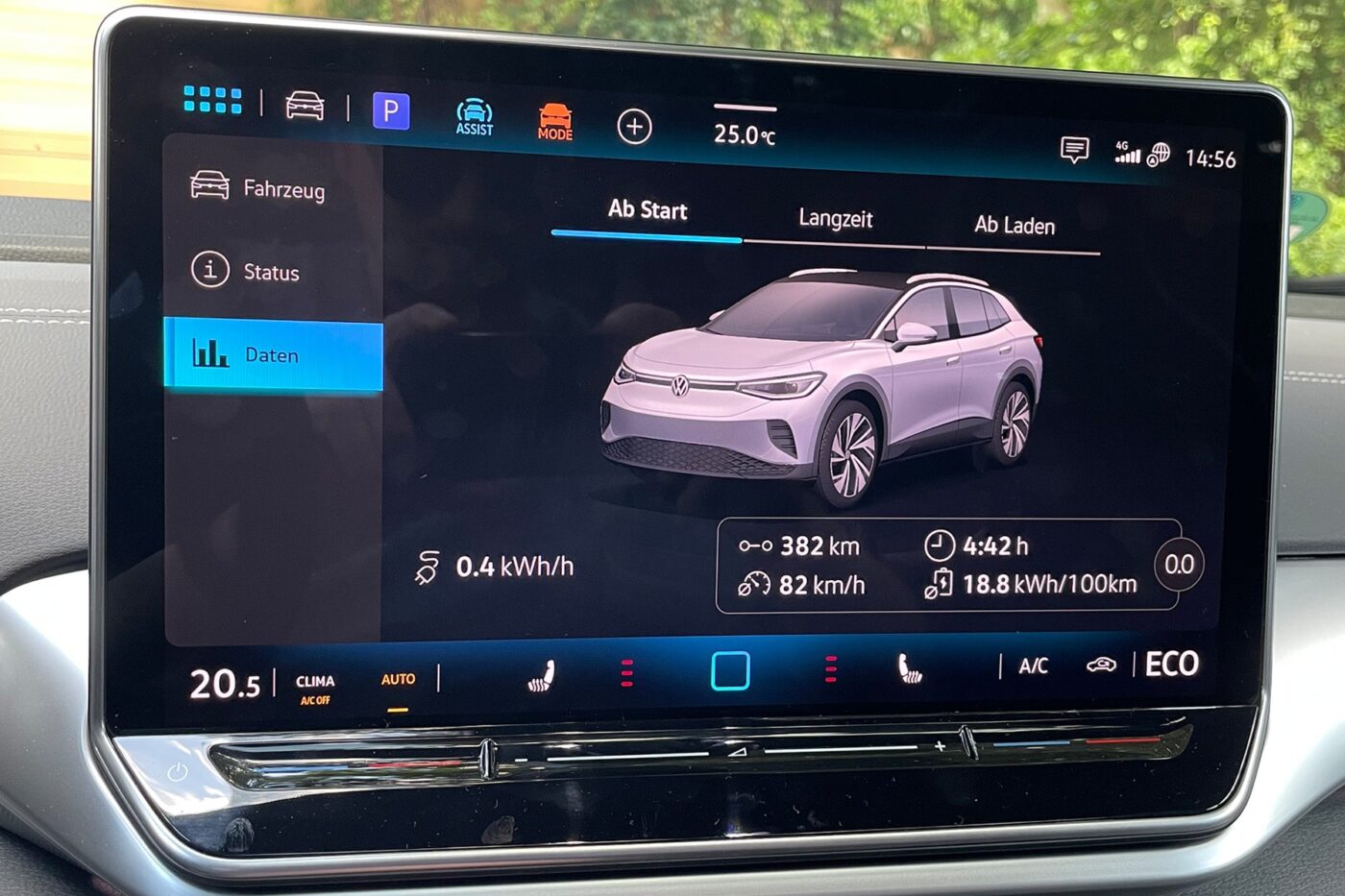
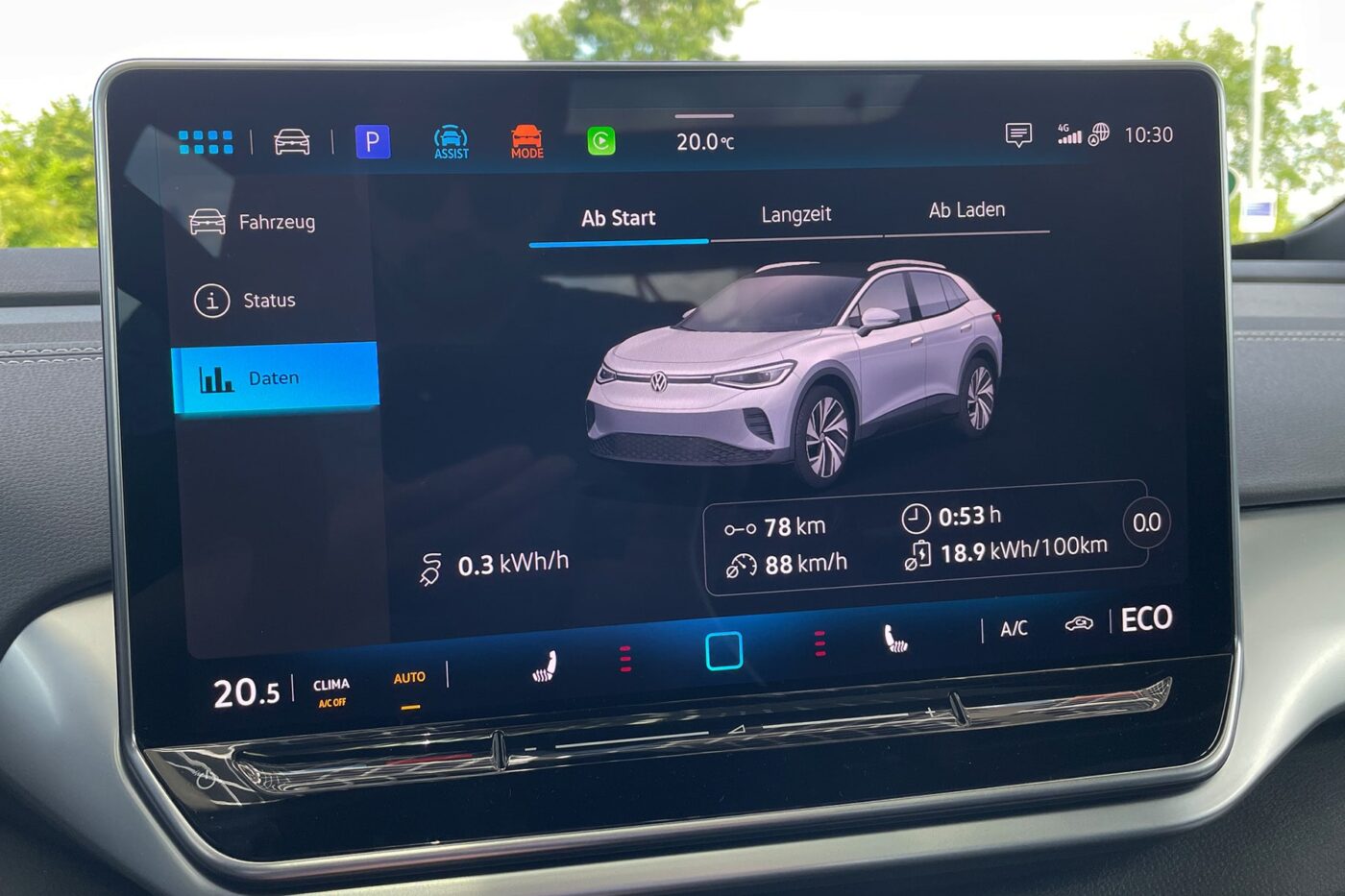
I was not only impressed by the simplified operation, but also by the assistance systems. They are still at a very high level and have nothing to hide. To go into every assistant would go beyond the scope of this article. Especially as no innovations have been introduced with the facelift. Adaptive recuperation, in particular, proved to be an indispensable helper during all the journeys. On the open road, the ID.4 sailed for as long as it could, with very gentle deceleration when entering built-up areas, before roundabouts or even bends. However, we would like to point out the configurator. In the basic version, there are only very few assistants such as a parking aid (warning signals), automatic distance control or the lane departure warning system ‘Lane Assist’. However, I would recommend purchasing at least the normal assistance package for €1,350, which includes a reversing camera or the parking assistant. Full comfort is then available with the largest assistance package for 3,120 euros.
Conclusion
And that brings us to the price. The ID.4 Pro 4MOTION with infotainment system currently costs 51,320 euros in the basic configuration. Volkswagen is offering a bonus until the end of September, bringing the entry-level price down to 47,750 euros. With a little equipment, however, this quickly rises to well over 50,000 euros (bonus included). A Model Y with all-wheel drive and comparable range currently costs 54,990 euros. However, if you want the ‘Enhanced Autopilot’, you pay an extra 3,800 euros. At 64.8 kWh, the BMW iX2 has a significantly smaller battery and therefore less range. The ‘comparable variant’ of the electric SUV starts at 57,000 euros. Just to list two competitors.
In the end, however, the choice in favour of the ID.4 is likely to depend on more factors than just the list price. And should it be an ID.4, a decision will have to be made between the motor options. One point could certainly be the towing capacity, which for the ID.4 Pro 4MOTION is 1,400 kilograms (braked, 750 kilograms unbraked). For the Pro, it is 1,200 kilograms (braked, 750 kilograms unbraked). So if you don’t need all-wheel drive or the full towing capacity, you should opt for the ID.4 Pro. This is currently available from 42,765 euros, including the environmental bonus and infotainment package.
In conclusion, it can be said that Volkswagen has given the ID.4 a good, but also much-needed update. The electric SUV is comfortable to drive, offers plenty of space and doesn’t have to hide from the competition from a technical point of view. However, even though VW has delivered a good overall package, there is still potential for optimisation.

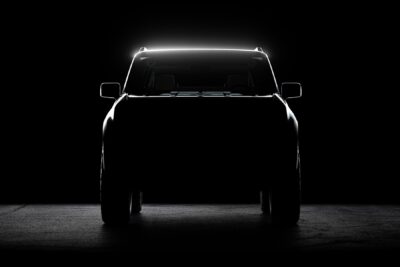
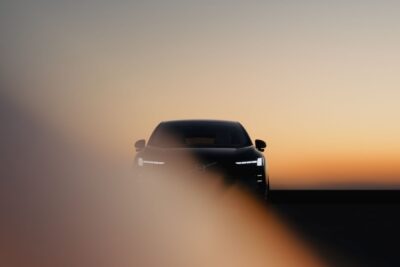

7 Comments